Related Research Articles

Frederick Douglass was an American social reformer, abolitionist, orator, writer, and statesman. He became the most important leader of the movement for African-American civil rights in the 19th century.

John Brown was a prominent leader in the American abolitionist movement in the decades preceding the Civil War. First reaching national prominence in the 1850s for his radical abolitionism and fighting in Bleeding Kansas, Brown was captured, tried, and executed by the Commonwealth of Virginia for a raid and incitement of a slave rebellion at Harpers Ferry in 1859.
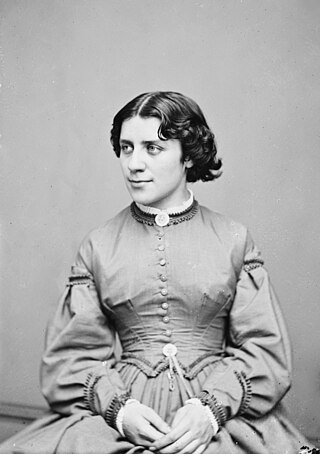
Anna Elizabeth Dickinson was an American orator and lecturer. An advocate for the abolition of slavery and for women's rights, Dickinson was the first woman to give a political address before the United States Congress. A gifted speaker at a very young age, she aided the Republican Party in the hard-fought 1863 elections and significantly influenced the distribution of political power in the Union just prior to the Civil War. Dickinson was the first white woman on record to summit Colorado's Longs Peak, Lincoln Peak, and Elbert Peak, and she was the second to summit Pike's Peak.

Harriet Jacobs was an African-American abolitionist and writer whose autobiography, Incidents in the Life of a Slave Girl, published in 1861 under the pseudonym Linda Brent, is now considered an "American classic".
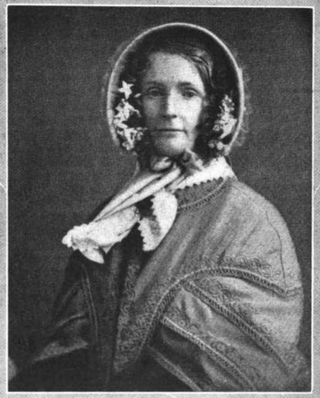
Maria Weston Chapman was an American abolitionist. She was elected to the executive committee of the American Anti-Slavery Society in 1839 and from 1839 until 1842, she served as editor of the anti-slavery journal The Non-Resistant.
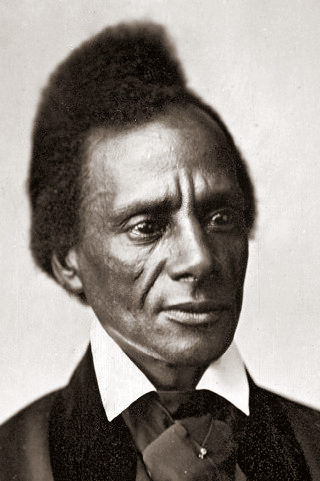
Charles Lenox Remond was an American orator, activist and abolitionist based in Massachusetts. He lectured against slavery across the Northeast, and in 1840 traveled to the British Isles on a tour with William Lloyd Garrison. During the American Civil War, he recruited blacks for the United States Colored Troops, helping staff the first two units sent from Massachusetts. From a large family of African-American entrepreneurs, he was the brother of Sarah Parker Remond, also a lecturer against slavery.

Mary Ann Day Brown was the second wife of abolitionist John Brown, leader of a raid on Harpers Ferry, Virginia, which attempted to start a campaign of liberating enslaved people in the South. Married at age 17, Mary raised 5 stepchildren and an additional 13 children born during her marriage. She supported her husband's activities by managing the family farm while he was away, which he often was. Mary and her husband helped enslaved Africans escape slavery via the Underground Railroad. The couple lived in Pennsylvania, Ohio, and in the abolitionist settlement of North Elba, New York. After the execution of her husband, she became a California pioneer.
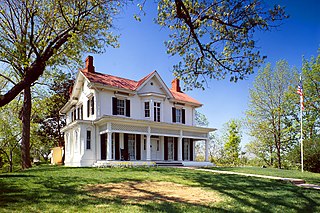
The Frederick Douglass National Historic Site, administered by the National Park Service, is located at 1411 W Street, SE, in Anacostia, a neighborhood east of the Anacostia River in Southeast Washington, D.C. United States. Established in 1988 as a National Historic Site, the site preserves the home and estate of Frederick Douglass, one of the most prominent African Americans of the 19th century. Douglass lived in this house, which he named Cedar Hill, from 1877–1878 until his death in 1895. Perched on a hilltop, the site offers a sweeping view of the U.S. Capitol and the Washington, D.C., skyline.

Martha Coffin Wright was an American feminist, abolitionist, and signatory of the Declaration of Sentiments who was a close friend and supporter of Harriet Tubman.
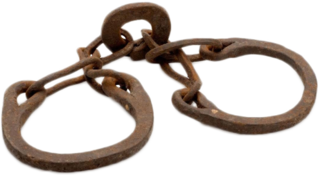
The Slave Power, or Slavocracy, referred to the perceived political power held by American slaveowners in the federal government of the United States during the Antebellum period. Antislavery campaigners charged that this small group of wealthy slaveholders had seized political control of their states and were trying to take over the federal government illegitimately to expand and protect slavery. The claim was later used by the Republican Party that formed in 1854–55 to oppose the expansion of slavery.

Ottilie Davida Assing was a 19th-century German-American feminist, freethinker, and abolitionist.

Life and Times of Frederick Douglass is Frederick Douglass's third autobiography, published in 1881, revised in 1892. Because of the emancipation of American slaves during and following the American Civil War, Douglass gave more details about his life as a slave and his escape from slavery in this volume than he could in his two previous autobiographies. It is the only one of Douglass's autobiographies to discuss his life during and after the Civil War, including his encounters with American presidents such as Lincoln and Garfield, his account of the ill-fated "Freedman's Bank", and his service as the United States Marshall of the District of Columbia. Frederick Douglass shed light on what life was like as an enslaved person. Although it is the least studied and analyzed, Life and Times of Frederick Douglass allows readers to view his life as a whole.

Anna Murray Douglass was an American abolitionist, member of the Underground Railroad, and the first wife of American social reformer and statesman Frederick Douglass, from 1838 to her death.
Caroline Remond Putnam was an African-American businesswoman and abolitionist in Salem, Massachusetts. Along with two of her sisters, she owned and operated the largest wig factory in the state, making her mark on the growing field of hair-care products for African-American women.

Rosetta Douglass-Sprague was an American teacher and activist. She was a founding member of the National Association for Colored Women. Her mother was Anna Murray Douglass and her father was Frederick Douglass.
Amy Matilda Williams Cassey was an African American abolitionist, and was active with the Philadelphia Female Anti-Slavery Society. Cassey was a member of the group of elite African Americans who founded the Gilbert Lyceum, Philadelphia's first co-ed literary society. The society had more than forty registered members by the end of the first year.

The Douglass family is a prominent American family originating from Cordova, Maryland, United States. It was founded by the politician and activist Frederick Douglass.

John Swanson Jacobs was an African-American author and abolitionist. After escaping from slavery, for a time he worked in whaling and other employment that took him around the world. In 1861, an autobiography entitled A True Tale of Slavery was published in four consecutive editions of the London weekly The Leisure Hour. He had left the manuscript for the autobiography with acquaintances. However, the unabridged and uncensored version, The United States Governed by Six Hundred Thousand Despots, had already been published by him in a Sydney, Australia newspaper in 1855. The Australian version was rediscovered and subsequently republished in 2024. The full autobiography is described among slave narratives as "unique for its global perspective and its uncensored fury". John Jacobs also features prominently, under the pseudonym "William", in the classic Incidents in the Life of a Slave Girl (1861), authored by his sister Harriet Jacobs.

Emily M. J. Cooley was an American religious and temperance leader affiliated with the Woman's Christian Temperance Union (W.C.T.U.) and the Woman's Foreign Missionary Society of the Methodist Episcopal Church.
References
- 1 2 3 4 5 6 7 8 9 Kenney, Colleen (2005-02-21). "Wyuka seeks headstone for abolitionist's adopted sister". JournalStar.com. Retrieved 2024-03-03.
- 1 2 3 4 5 6 Johnson, Tekla Ali; Wunder, John R; Anderson, Abigail B (2010). "Always on My Mind: Frederick Douglass's Nebraska Sister" (PDF). Nebraska History. 91.
- 1 2 3 4 5 6 7 8 9 10 11 12 13 14 15 16 17 18 Fought, Leigh (2006-04-06). "Bailey, Harriet". In Finkelman, Paul (ed.). Encyclopedia of African American History, 1619-1895: From the Colonial Period to the Age of Frederick Douglass Three-volume Set. Oxford University Press, USA. p. 110. ISBN 978-0-19-516777-1.
- 1 2 3 4 5 6 7 Fought, Leigh (2017-04-05). Women in the World of Frederick Douglass. Oxford University Press. pp. 65–67. ISBN 978-0-19-978261-1.
- 1 2 3 Fought, Leigh (2004). "Douglass Liaisons: The Female Correspondents of Frederick Douglass, 1842-52". Documentary Editing. 26 (1): 24–25.
- 1 2 3 4 5 6 7 8 Carvalho, Joseph III (2012). "Uncovering the Stories of Black Families in Springfield and Hampden County, Massachusetts: 1650–1865" (PDF). Historical Journal of Massachusetts. 40 (1): 86–87.
- 1 2 3 Lange-Kubick, Cindy (2018-02-15). "Ruth Cox Adams, beloved adopted sister of Frederick Douglass, at rest in Lincoln". JournalStar.com. Retrieved 2024-03-03.